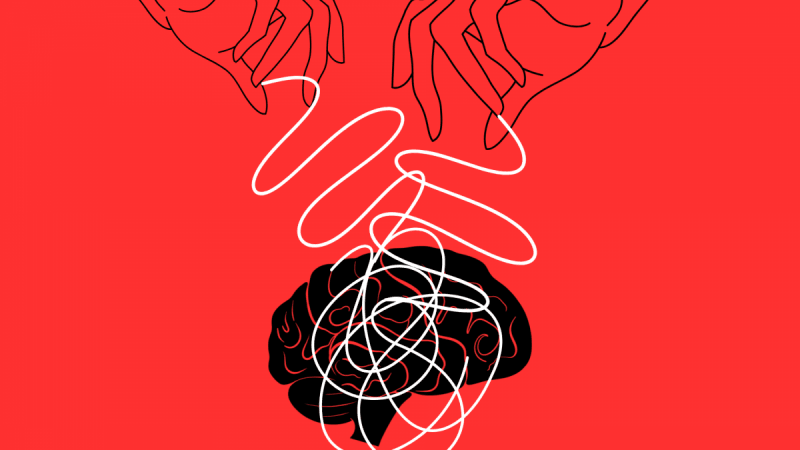
Cognitive warfare has rapidly become one of the most consequential and insidious forms of conflict in our era. Unlike traditional warfare, which targets physical assets, since it is waged directly against the human mind shaping perceptions, manipulating emotions, and ultimately influencing decisions and behaviors at every level : individual, societal, and national.
NATO's Allied Command Transformation manual highlights that "synchronized and coordinated attacks on emotions, thoughts and behaviors impact will, morale, decision-making and situational understanding." In this new battlespace, the mind itself is both the target and the terrain.
Since few often misunderstand it as Psychological warfare, its important to distinguish the two. Cognitive warfare is fundamentally broader and more insidious than traditional psychological operations (PsyOps). While PsyOps are typically military activities aimed at influencing the perceptions, attitudes, and behaviors of specific target audiences often enemy forces or populations during conflict cognitive warfare seeks to manipulate and degrade the very processes of human cognition across entire societies, including civilians, institutions, and even friendly populations. It leverages advanced technologies, exploits mental biases, and operates in the "grey zone" with deniability, aiming not just to influence decisions but to alter how people perceive reality itself.
As AI, social media, and algorithmic manipulation amplify its reach, cognitive warfare poses a far greater and growing threat: it can destabilize nations, undermine trust in institutions, and erode rationality and social cohesion on a systemic scale. This makes it a strategic challenge well beyond the scope of traditional psychological operations.
The scale of this threat is starkly illustrated by recent statistics. In 2024, over 70% of major global disinformation campaigns were AI-assisted. Deepfake incidents surged by 900% between 2022 and 2025, according to cybersecurity data. During the Ukraine conflict, more than 150,000 unique pieces of disinformation were detected in a single quarter. In India, hostile information operations spiked by 300% during border tensions in 2025. These numbers underscore how cognitive warfare is rapidly outpacing traditional PsyOps, posing a systemic and escalating danger to national stability and societal trust.
This new domain of conflict is evolving at breakneck speed, leveraging digital platforms, artificial intelligence, and emerging disruptive technologies to wage war in the information environment with unprecedented reach and precision.
From Ancient Deception to Digital Manipulation
The roots of cognitive warfare are ancient. Sun Tzu's maxim, "All warfare is based on deception," is as relevant today as it was 2,500 years ago. Psychological operations, propaganda, and influence campaigns have shaped wars and revolutions throughout history. What sets modern cognitive warfare apart is its scale, anonymity, and rapidity, enabled by digital technology. Today, adversaries can launch coordinated cognitive attacks across borders and populations, often without attribution, and with effects that can persist for years or even decades.
Cognitive Warfare: Beyond Disinformation and Hybrid Threats
Cognitive warfare is more than just propaganda or disinformation. It is a deliberate, offensive maneuver to manipulate the emotional and subconscious processes of the human mind. Unlike Foreign Information Manipulation and Interference (FIMI) or hybrid threats, which may end with the acceptance or rejection of a narrative, cognitive warfare seeks to alter how individuals and societies think, feel, and act often without their conscious awareness. As NATO's concept paper explains, "cognitive attacks are designed to use information to activate the subconscious processes in our brains, making it difficult for our conscious minds to perceive the presence of a cognitive threat."
How Cognitive Warfare Works
Cognitive warfare exploits a range of techniques and technologies:
- AI-Driven Profiling and Targeting: Algorithms analyze vast datasets to identify vulnerabilities and craft personalized influence operations. In 2025, a study by Mozilla revealed that AI systems harvest and analyze enormous amounts of sensitive personal data, enabling adversaries to micro-target individuals with psychological operations tailored to their personality traits, fears, and habits.
- Deepfakes and Synthetic Media: AI-generated audio and video content erode trust in leaders, institutions, and even reality itself. According to a 2025 ORF survey, only 32% of Indians could reliably identify deepfakes, highlighting the scale of the threat.
- Information Overload and Speed: The sheer volume and velocity of digital content overwhelm cognitive defenses, inducing confusion, fatigue, and indecision. Social media platforms, driven by engagement algorithms, prioritize sensational and emotionally charged content, making it even harder for people to distinguish fact from fiction.
- Reflexive Control: Adversaries manipulate decision-makers into self-defeating choices by exploiting cognitive biases and emotional triggers. The Russian military doctrine of "reflexive control" has been used to influence Western responses in Ukraine and beyond.
- Hybridization: Cognitive operations are synchronized with cyberattacks, economic pressure, and even kinetic actions, blurring the lines between peace and war. The Chinese PLA, for example, integrates AI-driven cognitive warfare with electronic and cyber operations for maximum effect.
Influence and Impact: Destabilization and the Weakening of Nations
The true danger of cognitive warfare lies in its capacity to destabilize and weaken entire nations. Its effects are not limited to individual confusion or temporary disruption; rather, they are designed to erode the very foundations of national security and societal cohesion.
- Polarization and Fragmentation: By exploiting social divisions and amplifying grievances, cognitive warfare deepens polarization, isolates groups, and makes societies more susceptible to internal strife. During the COVID-19 pandemic, coordinated disinformation campaigns exploited public fear, fueling conspiracy theories and undermining public health responses.
- Delegitimization of Government: Targeted campaigns undermine trust in leadership and institutions, eroding the legitimacy of governance and making it harder for states to respond to crises or threats. In the 2016 U.S. election, Russian cognitive operations shifted public focus from foreign interference to internal scandals, weakening democratic processes.
- Disruption of Economic and Social Systems: Attacks can target critical infrastructure, economic activities, and communication networks, weakening the state's ability to function cohesively. In the India-Pakistan conflict of 2025, AI-driven propaganda triggered panic about fuel shortages, disrupting supply chains and public order.
- Confusion, Chaos, and Loss of National Will: Sustained campaigns create mass confusion, leading to a loss of faith in leadership and opening the door to chaos and opportunistic exploitation by adversaries. In Ukraine, Russian-origin disinformation and psychological operations have sought to sap the morale of both the military and civilian population.
- National Destabilization: Destabilization is not a byproduct but a fundamental goal of cognitive warfare. By accelerating existing social divisions or introducing new polarizing narratives, adversaries disrupt the unity and organization of a society. This results in a loss of cooperation, productivity, and collective focus, as populations become overwhelmed by internal conflicts and less able to pursue common national goals.
A 2024 analysis found that over 70% of major global disinformation campaigns were AI-assisted, and deepfake incidents increased by 900% between 2022 and 2025. During the Ukraine conflict, disinformation exceeded 150,000 unique pieces in a single quarter, while India reported a 300% increase in hostile information operations during border tensions in 2025.
Case Studies: Cognitive Warfare in Action
- Russia's Global Campaigns: Russia's cognitive warfare strategy spans decades and geographies, targeting reasoning and decision-making to erode adversaries' will to resist. The 2016 U.S. election interference, the annexation of Crimea, and ongoing operations in Ukraine showcase Russia's use of media, diplomacy, cyberattacks, and military posturing to create confusion and acceptance of Russian narratives. According to the Institute for the Study of War, Russia's approach is a model now studied and emulated by China, Iran, and North Korea.
- China's Economic and Cognitive Leverage: In the ongoing "Second Cold War," China targets the U.S. and its allies not just through economic interdependence but also through cognitive campaigns that sow doubt about supply chain security and national resilience. The Chinese PLA's doctrine of "cognitive dominance" integrates AI, big data, and psychological operations to manipulate perceptions and degrade adversary decision-making.
- COVID-19 "Infodemic": During the pandemic, Russia, China, and Iran launched coordinated disinformation campaigns to undermine public confidence in Western health authorities, exacerbate divisions, and hinder crisis response. The World Health Organization described this as an "infodemic," where misinformation spread faster than the virus itself.
- Domestic Extremism and Polarization: In the U.S., both foreign and domestic actors leverage cognitive warfare tactics to deepen polarization, delegitimize institutions, and manipulate public opinion especially during elections and crises. The 2024 U.S. midterm elections saw a record volume of AI-generated political ads and coordinated bot campaigns, with social media platforms struggling to keep pace.
Strategic Analysis
Francois du Cluzel of NATO's Allied Command Transformation warns, "Cognitive warfare causes an insidious challenge. It disrupts the ordinary understandings and reactions to events in a gradual and subtle way, but with significant harmful effects over time."
Canadian defense strategist Dr. Jean-François Roy observes, "Adversaries exploit open societies through targeted disinformation campaigns, especially during elections, disasters, and pandemics, when emotional engagement is high and media saturation is intense." The U.S. Department of Homeland Security highlights that cognitive defense requires more than technical solutions it demands ethical frameworks, legislative reforms, and societal resilience.
Defensive Strategies: Building Cognitive Resilience
Countering cognitive warfare requires a comprehensive, multi-layered approach:
- Societal Resilience: Public education, critical thinking, and media literacy are essential to inoculate populations against manipulation. In 2025, Estonia's nationwide digital literacy campaign reduced susceptibility to disinformation by 40% among young adults, according to a government report.
- Policy and Governance: Clear legal authorities and ethical frameworks are needed to empower agencies to counter disinformation while protecting civil liberties. The European Union's Digital Services Act, implemented in 2024, mandates stricter transparency and accountability for online platforms.
- International Cooperation: Alliances and partnerships are vital for intelligence sharing, harmonized countermeasures, and the establishment of global norms. The NATO Cooperative Cyber Defence Centre of Excellence (CCDCOE) has become a hub for joint research and rapid response to cognitive threats.
- Technological Solutions: AI-enabled detection, attribution, and rapid response capabilities must be integrated into national security strategies. In 2025, the U.S. Department of Defense launched Project Sentinel, an AI system that scans and flags coordinated disinformation campaigns in real time.
- Whole-of-Nation Frameworks: Military, intelligence, cyber, and civil society must coordinate efforts for a unified and effective defense. Israel's "National Cognitive Security Task Force" brings together government, academia, and tech industry leaders to counter cognitive threats.
Future Trajectory: Toward Cognitive Peace or Perpetual Conflict?
The trajectory of cognitive warfare points toward even greater sophistication and reach. Advances in AI, neurotechnology, and immersive digital environments will make influence operations more pervasive and subtle. As "Cognitive Warfare in the Age of Unpeace" observes, the battlefield of the mind is now the decisive arena between peace and war. The establishment of cognitive peace will require international cooperation, robust defenses, and a deep understanding of the ethical dimensions of influence and manipulation.
Strategic Imperative for Leaders
Cognitive warfare is not a passing trend but a defining challenge of our era. Its capacity to destabilize, fragment, and weaken nations is both a strategic threat and an operational reality. For leaders, the imperative is clear: invest in cognitive security, foster societal resilience, and build the alliances and frameworks necessary to defend the ultimate domain the human mind. As history shows, the battle for the mind is the battle for the future.
[Major General Dr Dilawar Singh, a Ph.D. with multiple postgraduate degrees, is a seasoned expert with over four decades of experience in military policy formulation and counter-terrorism. He has been the National Director General in the Government of India. With extensive multinational exposure at the policy level, he is the Senior Vice President of the Global Economist Forum, AO, ECOSOC, United Nations. He is serving on numerous corporate boards. He has been regularly contributing deep insights into geostrategy, global economics, military affairs, sports, emerging technologies, and corporate governance.]

















